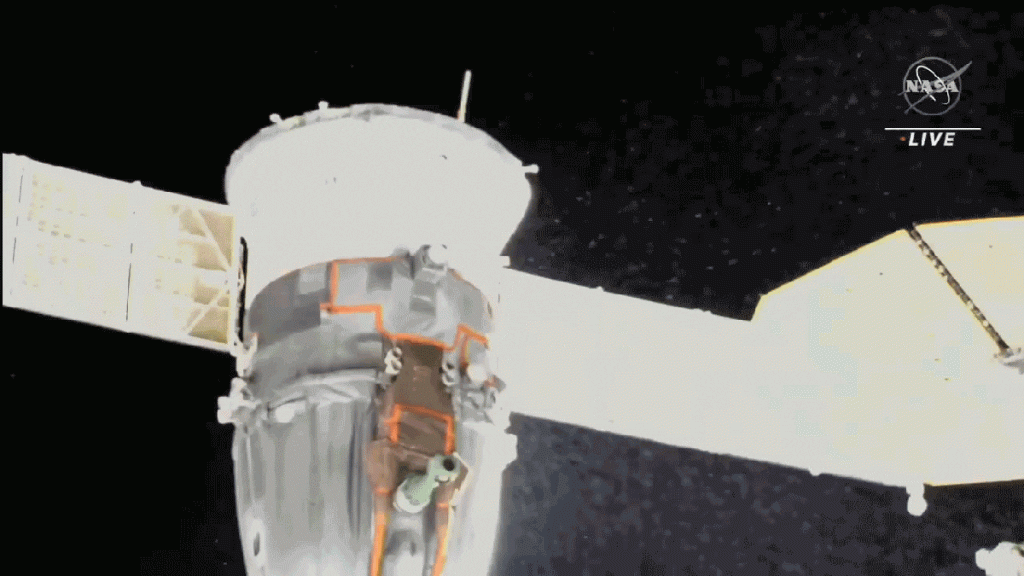A Small Meteor May Be Responsible for the Coolant Leak from the Russian Soyuz MS-22

A tiny meteor could be to blame for the coolant leak from the Soyuz MS-22, which forced cosmonauts aboard the International Space Station to cancel a spacewalk just as they were in the process of depressurizing the airlock. The Russian spacecraft is currently still docked to the Rassvet module on the ISS.
The “fairly substantial” leak was identified by NASA as a coolant leak coming from the rear section of the Soyuz, and the Guardian reports that Roscosmos officials suspect it was caused by a micrometeoroid smashing into the craft’s radiator at a speed faster than that of a bullet. The report explains how these “naturally occurring pieces of rock or metal […] can be as small as a grain of sand,” and “they hurl around the Earth at about 17,000mph (27,400km/h).”
NASA is helping its Russian counterpart Roscosmos verify the cause of the coolant leak, and the U.S. agency is also helping evaluate whether the possible impact and coolant leak compromised the integrity of the Russian spacecraft, which has ferried crew members from the U.S. and Russia to the ISS.
The leak did not pose any immediate danger to cosmonauts Sergey Prokopyev and Dmitri Petelin, who were scheduled for a spacewalk that would have lasted just under seven hours, according to Space. None of the other crew members currently on the ISS — including one additional cosmonaut, three U.S. astronauts and one Japanese astronaut — were in danger, according to NASA.
Image: NASA
The planned extravehicular activity (aka EVA, aka spacewalk) was nonetheless cancelled at the last minute for the sake of safety. Russian flight controllers noticed the “visible stream of flakes” when the spacewalk was about to begin, and told the cosmonauts to abort the mission, as the Guardian reports; the cosmonauts repressurized the airlock and reentered the ISS shortly afterward.
The coolant leak was also visible via a NASA livestream, and ground crews at the Johnson Space Center in Houston said the coolant leak was near the Soyuz MS-22’s instrumentation and propulsion module, found at the aft section of the vehicle, which sits docked at the Rassvet module.
The Rassvet is one of four docking modules on the ISS, and is used for cargo storage as well as a docking port for spacecraft hauling supplies and crew to the ISS. In fact, the the Soyuz MS-22 docked to the Rassvet recently, on September 21, 2022, when it brought NASA astronaut Frank Rubio and both cosmonauts Sergey Prokopyev and Dmitri Petelin aboard space station.
The Soyuz is supposed to ferry the same three crew members home in March, but the spacecraft’s return to Earth could be delayed due to the leak. Moreover, the Soyuz is also one of the designated “lifeboats” on the ISS that would be used during an emergency evacuation, according to Space, which means addressing the leak is a priority for all countries and agencies currently aboard the ISS.
Image: NASA



